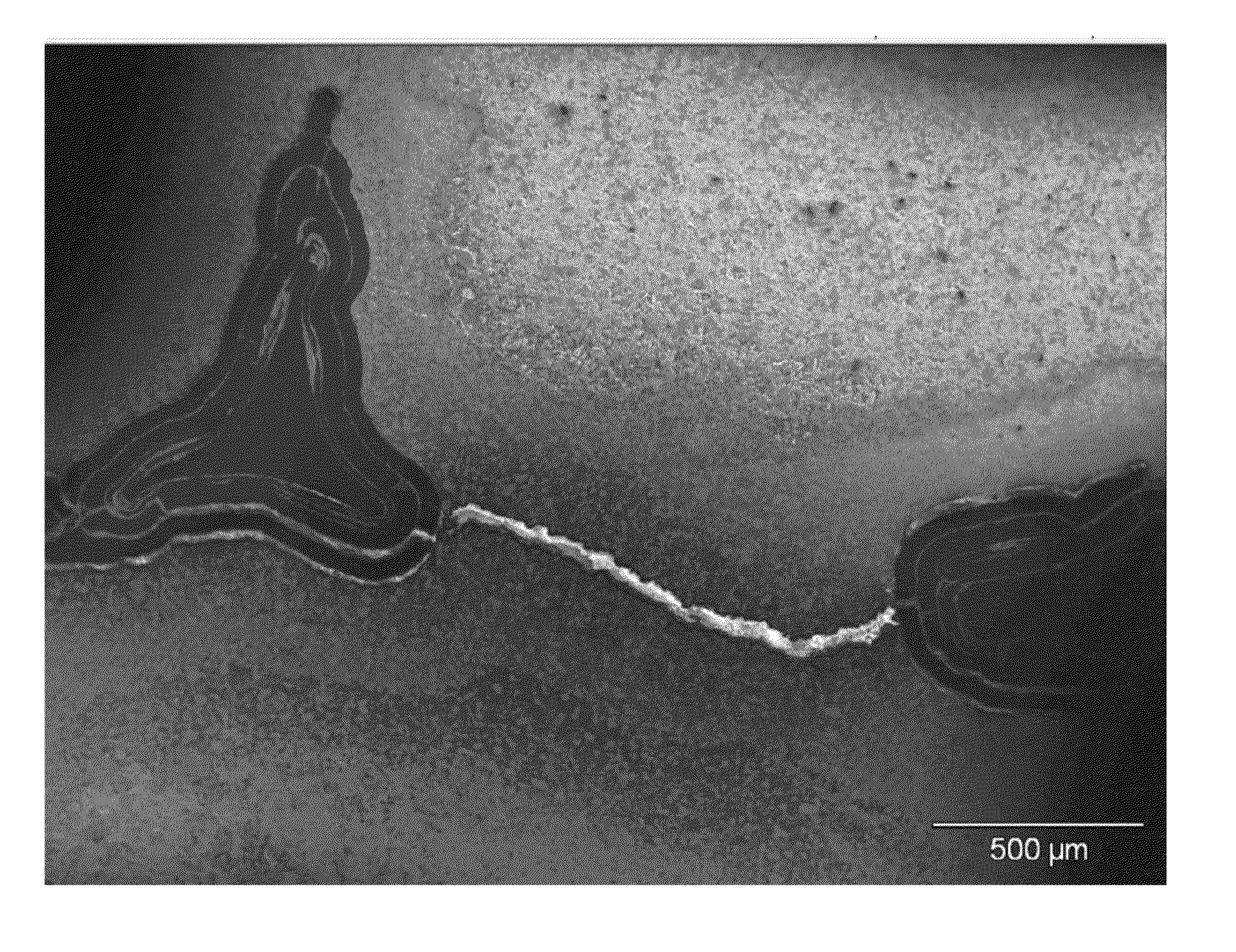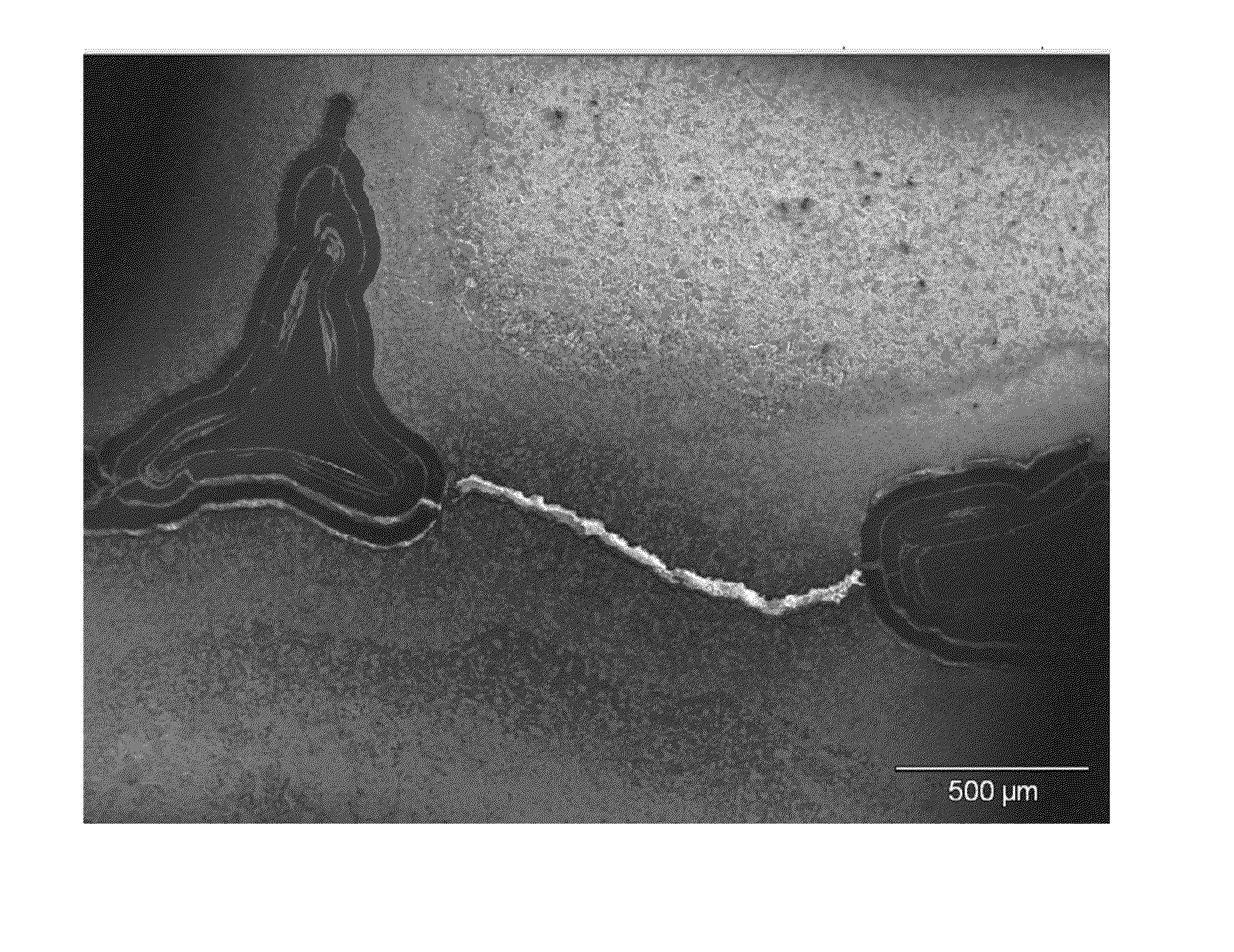Structures utilizing phase change for heat management applications
a technology of phase change and structure, applied in the field of ceramic materials, can solve the problems of system at the upper limit of performance and the capability of its constituent materials, unsatisfactory limits on design and/or duty cycles, and significant weight and complexity penalties
- Summary
- Abstract
- Description
- Claims
- Application Information
AI Technical Summary
Benefits of technology
Problems solved by technology
Method used
Image
Examples
example
[0026]A sample of an open-cell reticulated B4C ceramic foam, having a density of about 10% and a porosity of about 5-10 ppi, is loaded into a graphite or refractory metal die, and a blend of TaC and Ta2C powder having a 325 mesh particle size is poured into the die on top of the ceramic foam, with vibration used to enhance penetration of the powder into the foam. After the foam has been fully penetrated with the powder, it is subjected to hot isostatic pressing at a pressure of about 1000 psi and a temperature of about 1650° to form a sintered monolithic article. The article is removed from the press and allowed to cool before being subjected to thermal testing. A photomicrograph of a cross-section of such an article is shown in FIG. 1, where the dark triangular section is a cross-section of a B4C foam ligament surrounded by the lighter grey section, which is the tantalum-based ceramic matrix material.
[0027]A sample prepared similar to the above description was subjected to simulate...
PUM
| Property | Measurement | Unit |
|---|---|---|
| pressure | aaaaa | aaaaa |
| temperature | aaaaa | aaaaa |
| pressures | aaaaa | aaaaa |
Abstract
Description
Claims
Application Information
 Login to View More
Login to View More - R&D
- Intellectual Property
- Life Sciences
- Materials
- Tech Scout
- Unparalleled Data Quality
- Higher Quality Content
- 60% Fewer Hallucinations
Browse by: Latest US Patents, China's latest patents, Technical Efficacy Thesaurus, Application Domain, Technology Topic, Popular Technical Reports.
© 2025 PatSnap. All rights reserved.Legal|Privacy policy|Modern Slavery Act Transparency Statement|Sitemap|About US| Contact US: help@patsnap.com


